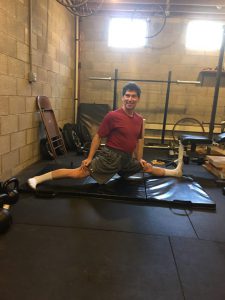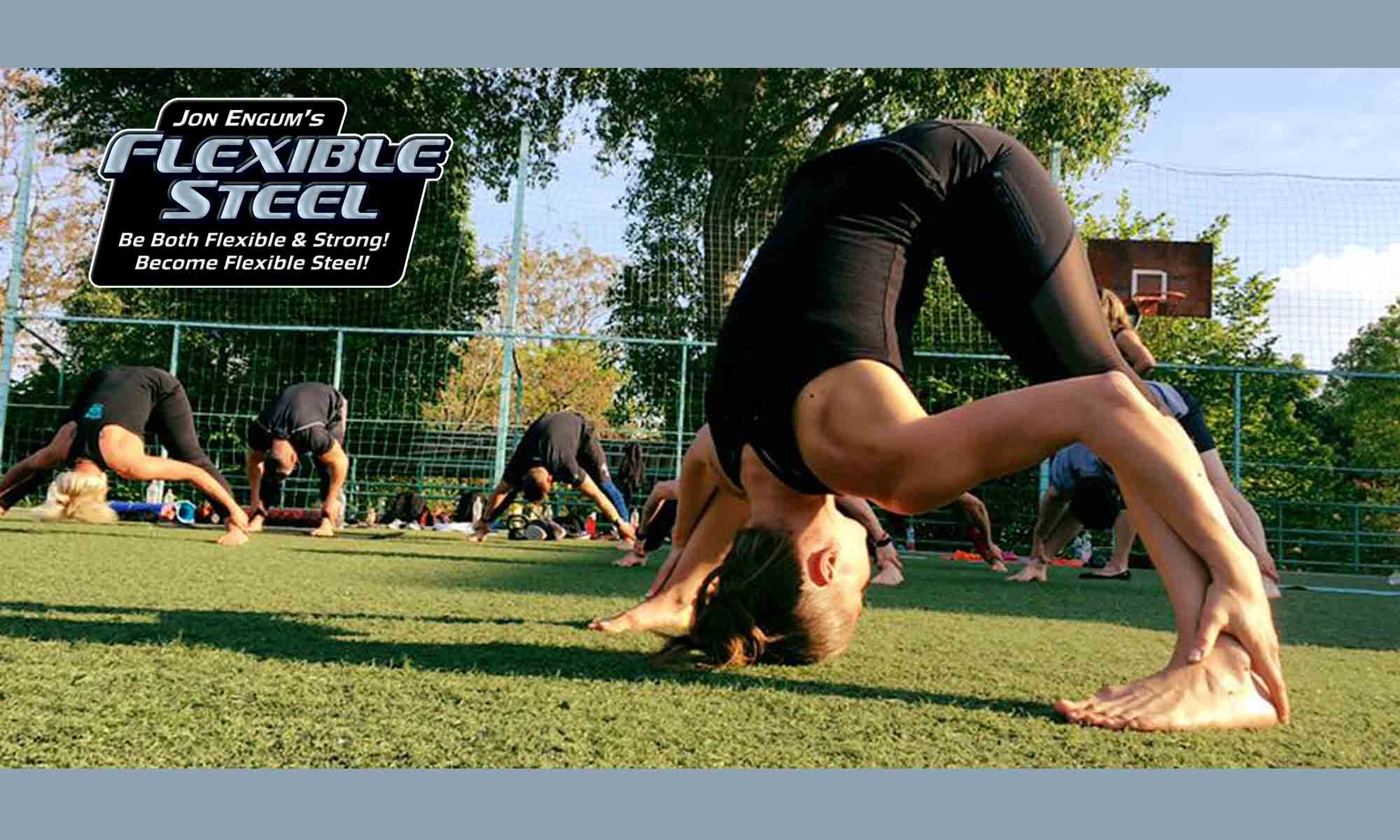There are many ways to work on achieving a front, side, or martial arts split, and most of us know how to train for these – we get into a position near our current limits, we tense our muscles, and then we relax into the stretch increasing our range of motion a little with each contract-relax cycle. The frog series in Flexible Steel is a great example – you essentially work on your split one leg at a time, and those gains will transfer to your two-legged split.

I want to introduce you to a new concept, and then to a different idea of how to train your splits. THE CONCEPT Your body won’t let you get into a position in which you cannot demonstrate control, and controlling your body requires strength. If we explore this a little, we realize it’s just common sense – you move through the common movement patterns and positions of daily life easily because you have acquired the strength to control yourself in them.
How, then, can we make your mind trust your body to be in a split? The answer: by making it difficult to get into your split. If you have to work – push, pull, wiggle – to get into your split, you will use strength to do so. Rather than get into position via a slippery surface and then tense our muscles, we will structure our splits practice to require us to use our own strength to get into position.
THE PRACTICE Traditional split training is done on a surface with little resistance like a hardwood floor, but I want you to pick a surface where you cannot simply slide your feet into a split. Instead, pick a sticky surface. My favorite is a thick gym mat, the kind that are at least an inch thick. On this kind of surface, if you attempt to slide your feet out to the sides or to the front and back, you’ll get stuck – your feet dig into the mat and you don’t go anywhere.
What, therefore, must you do in order to get your feet out wider? You must use our Flexible Steel techniques. You must use your Strength to push your feet out further, but if you do, you’ll still get stuck. You must therefore using a technique we call Prying, wiggling your feet and ankles to work your way to a wider position. The process of Prying will bring another Flexible Steel principle, Space, into play. When you wiggle joints and muscles you’re trying to stretch, you create space in them.
And in addition, you also Spread the load because you must tighten up your legs in order to push your feet further out – otherwise, you’d just bend your knees when you pushed.Prying is an extremely powerful implementation of all three of our “S” principles. When you pry a joint and its associated muscles, you strengthen the muscles, you make space in the joints, and your spread the load. And, perhaps most important, you teach your body that you are able to control your limbs near the limits of their current range of motion.
FINE-TUNING You will need to experiment with footwear that works with the surface you’ve chosen. In my experience, snug-fitting socks on a thick gym mat work best. Bare feet tend to be a little too sticky but try it if you wish. A similar approach can be taken on a lawn, or at the beach, but sand is relatively easy to move. Remember that we are looking to making it harder, not easier, to get into position for our splits.
GOOD NEWS AND BAD NEWS You will become stronger at your limits, and harder you’re willing to work, the stronger you’ll become. And the stronger you become, the more your mind will allow your body to move further into a split. The bad news here is that you won’t be able to get quite as far as you would on a slipperier surface but, in my experience, that doesn’t really matter. Contracting your muscles while on a slippery surface is a way of manufacturing muscle tension in order to follow it with relaxation; the approach I’ve outlined above gives you a real obstacle to push again, and a real need to pry, wiggle, and push with your legs.
You may, of course, train both on sticky and slippery surfaces, but in my experience, the sticky surface builds a more “real” strength and should constitute at least 50% of your splits training, and if it becomes 90% of your splits training, I think you’ll find you get further, faster than by working on a slippery surface most of the time.
CONCLUSION Remember that your body won’t trust you to get into a position you can’t control. Build strength by adding resistance to getting into position for your splits training and you will reap the rewards of deeper splits, achieved faster, and with more comfort at the extremes of your range of motion. By Steve Freides – Flexible Steel Instructor Specialist. Be sure to check out our upcoming events and become Flexible Steel!
